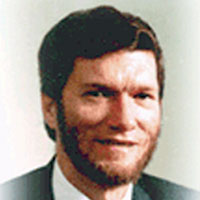Is "Science Fiction" In Your Curriculum?
By Ken Ham
Printed in Practical Homeschooling #36, 2000.
 Does your textbook teach science... or science fiction?
Does your textbook teach science... or science fiction?

|
 |
 One of the most important goals of marriage is to have godly offspring (Malachi 2:15), who will themselves produce more godly offspring. When this goal is fulfilled, the world is affected increasingly for Jesus Christ, generation after generation. As homeschooling Christians, it is crucial that we do all that we can to promote this key objective.
One of the most important goals of marriage is to have godly offspring (Malachi 2:15), who will themselves produce more godly offspring. When this goal is fulfilled, the world is affected increasingly for Jesus Christ, generation after generation. As homeschooling Christians, it is crucial that we do all that we can to promote this key objective.
There is no question that the curricular choices we make are extremely important. It is critical that we build a curriculum with Biblically sound resources we can rely upon. For good or for bad, the textbooks, workbooks, reference works and other materials we select will significantly influence the minds and hearts of our children.
Unfortunately, when it comes to the subject of origins, the available information is often just plain wrong. For many years, popular curricular materials - especially textbooks - have touted "scientific evidence" which allegedly "proves" molecules-to-man evolution beyond a doubt.
In some cases, this highly acclaimed "evidence" has turned out to be bogus - not just "honest mistakes," but intentionally faked or fabricated misinformation. It is sad, but true that a number of well-known deceptions continue to be perpetrated in widely-used textbooks and other curricular resources, even though the scientific community has debunked and repudiated the so-called "evidence."
Since most of us were taught these falsehoods as valid science, and many homeschoolers currently draw to some extent upon secular textbooks and reference materials, the problem is significant. And it's not limited to secular materials only; such evolutionary misinformation continues occasionally to crop up, even in Christian resources!
A similar problem occurs in the popular media. Some new "discovery" with positive implications for evolution will immediately be trumpeted around the globe. Later, if it happens that scientists - after further investigation - report flaws in the theory, or that fraud has occurred, an obscure retraction might be communicated by a small fraction of the media that carried the original story.
The evolutionary educational elite is well aware of these exposed hoaxes and frauds. So do we hear them warning, "These 'proofs' are not proofs at all"? Rarely. Rather, these unfounded "myths" continue to appear over and over, used as propaganda to deceptively promote evolution in virtually every kind of educational medium.
It is vitally important to be able to recognize and address these false claims, as we strive to teach our children to discern truth from error.
Below, three of the most widespread and persistent "myths" of evolution are exposed: the evolution of peppered moths, Haeckel's "embryonic recapitulation," and the evolution of horses.
Peppered Moths: An Evolutionary Tale Comes "Unglued"
This modern classic of evolution is a story that has been told countless times. There are light and dark varieties of peppered moths. In England, during the Industrial Revolution, air pollution darkened the bark of trees by killing light-colored lichens and depositing soot. The lighter moths lost their adaptive advantage, as they increasingly "stood out" against the darker tree trunks, where they rested. As the more visible lighter moths were selectively eaten by birds, the dark moths "evolved" into the predominant variety. Later, as the pollution was gradually cleaned up, the light moths became predominant again.
Were it true, the story would merely illustrate genetic shifts within one created kind, due to natural selection. However, the facts behind this story reveal the truth of the matter:
- Peppered moths are strictly nocturnal.
- The moths do not rest on tree trunks by day.
- Films of peppered moths being eaten by birds showed laboratory-bred moths, placed on the tree trunks. (The moths were so lethargic that the leading "researcher," H. B. Kettlewell, once had to warm them up on a car hood.)
- Still photos - including those used in a NOVA documentary - show dead moths that were glued to the trees.
Embryonic Recapitulation: Ernst Haeckel's Biggest "Fish Story"
People may forget Haeckel's name and the term "embryonic recapitulation," but his fraudulent concept is familiar to many and widely accepted. It is just one of several highly-effective deceptions used by Haeckel to promote evolution, from the 1860s into the early 1900s.
This totally false idea is sometimes called the "law of recapitulation" or the "biogenetic law," and is often summarized in the mouthful, "ontogeny recapitulates phylogeny." It is the idea that during an organism's early development it supposedly re-traces its evolutionary history. So, a human embryo is supposed to pass through a fish stage, an amphibian stage, a reptile stage, and so on.
Informed evolutionists, and especially embryologists, have known for many decades that Haeckel's "biogenetic law" is no law at all. There is no anatomical evidence to support it. Nevertheless, some propagandists and popularizers of evolution (such as the late Carl Sagan) continue to promote the idea of evolutionary recapitulation, and it can easily be found in many current books (encyclopedias are notorious). Tragically, the delusion that humans go through non-human developmental stages in the womb is still used to justify infanticide in many abortion clinics.
The truth of Haeckel's embryonic recapitulation is that it is a lie. Here are the facts:
- Lacking evidence, Haeckel altered other scientists' drawings of human and dog embryos, greatly increasing their similarity. His peers exposed this fraud, prompting a "confession" from him, in which he faulted the draftsman - not acknowledging that he himself was the draftsman.
- Twice, Haeckel published 24 drawings, allegedly of eight vertebrate embryos (fish, salamander, turtle, chicken, pig, cow, rabbit, and human), each in three stages of development. Still appearing in textbooks and popular works on evolution, they show great similarities, especially in the earlier stages. Amazingly, no one bothered to check them . . . until very recently. It turns out that Haeckel's fraud was much worse than anyone suspected - the similarities are much, much less than what the deceptive drawings show. Haeckel not only concocted fake human-looking embryos, he also trumped up the similarities by altering the scale, even when there were 10-fold differences in size.
Evolutionary Horseplay: A Horse Is A Horse, of Course
The so-called horse series is one of the most-used "proofs" of evolution. The alleged evidence is a familiar fossil series, neatly progressing from the small, four-toed "dawn horse" or Eohippus (supposedly living 50 million years ago) to the large, one-toed "modern" horse, Equus. Shown in-between, in order of increasing size, are usually such intermediates as Mesohippus, with three toes, and Merychippus, which had two of the toes smaller than the third. (There are actually over a dozen horse ancestors shown in a complete evolutionary "family tree.") Some diagrams also show a trend in tooth changes, supposedly evidence of evolution from browsing on bushes to grazing on grass.
Some evolutionists still tout the horse series as a record of evolution in action, producing a new structure (the single toe) and adaptive changes (various tooth shapes). However, an honest look at the fossil evidence - and a little "horse sense" - reveal a very different picture. Far from an evolutionary series, these fossils represent a non-horse and a variety of true horses. In the true horses, we have another example of the great genetic variability originally present in the created kinds of organisms.
Consider the facts which proponents of the evolutionary horse series choose not to disclose:
- In fact, the horse series is non-existent. Nowhere in the world can these fossils be found "correctly" sequenced in successive strata. In Oregon, three-toed and one-toed species are found in the same geological layer, and in South America, a one-toed species is found below its supposed three-toed ancestor.
- Three-toed horses are known today, in the American southwest, with all three toes of nearly equal size. Also, today's horses come in an amazingly wide range of sizes, so modern (large, one-toed) horses do not represent the last stage of a series.
- The series fails to take other structures into consideration. For example, the number of ribs, moving through the theoretical sequence, jumps around from 18 pairs to 19, then to 15, and finally back to 18 in Equus, the "modern" horse. (And what of the fact that living, breathing modern horses can have 17, 18 or 19 pairs of ribs?)
- It is observed that tooth shapes can vary considerably among the (living) species of a given kind, such as the equines (horses). Also, isotopic analyses of fossil horse teeth show that the differences in tooth shape do not indicate adaptation to different diets.
- Eohippus, the small, four-toed "dawn horse" does not look at all like a horse. Richard Owen, a leading paleontologist and opponent of Darwin (also originator of the term "dinosaur") discovered the creature in 1841. He named it Hyracotherium, because he found its skeleton to be identical to that of the hyrax or rock badger, a rabbit-like animal that lives today in the African bush.
- Eohippus (Hyracotherium) fossils have been found in surface strata together with two modern Equus species. These "distant evolutionary relatives," supposedly marking the beginning and end of the horse series, actually coexisted.
Be On Guard
There are, sad to say, numerous other instances of scientific fraud perpetrated upon millions of unwary persons, generation after generation. Take, for example, the "doctored" fossil evidence of human evolution via the ape-like hominids. Or how about the recent "flap" over the Archaeoraptor hoax in the pages of National Geographic?
The goal of Christian homeschoolers should be to train the next generation to mature into godly men and women-embracing a Christian worldview about everything. It is incumbent upon us to be spiritually on guard.
As Paul admonished Timothy, "keep that which is committed to thy trust, avoiding profane and vain babblings, and oppositions of science falsely so called" (1 Timothy 6:20).